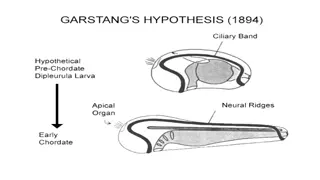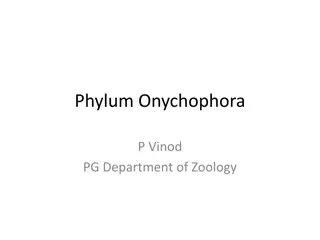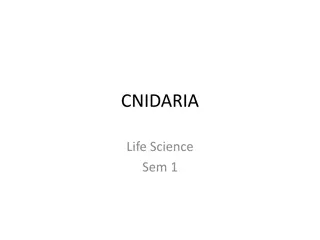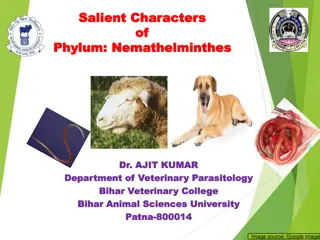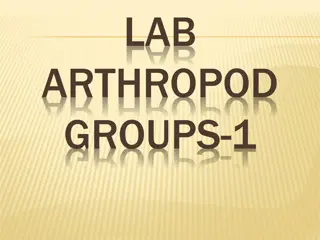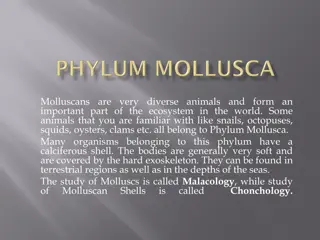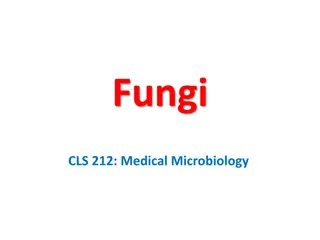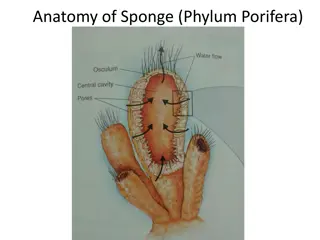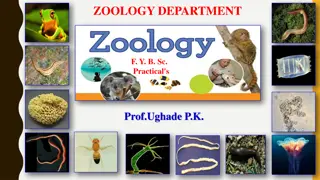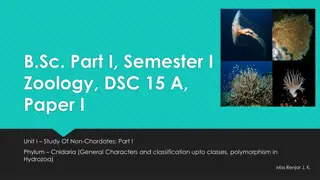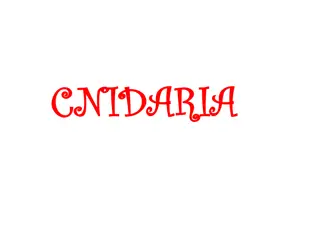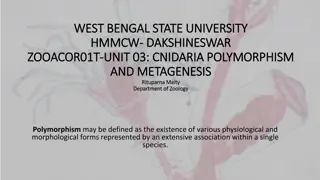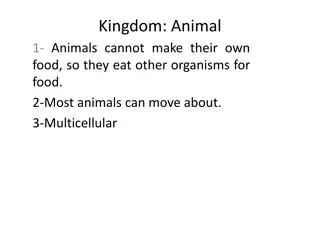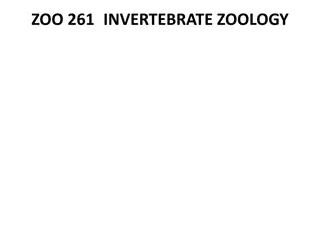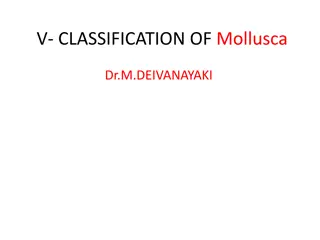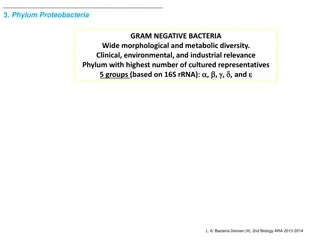Exploring the Characteristics of Phylum Cnidaria
Phylum Cnidaria, derived from the Greek word meaning stinging nettle, encompasses various marine species like jellyfish, sea anemones, and corals. These animals exhibit traits such as being diploblastic, with an ectoderm and endoderm separated by mesogloea. They possess a gastrovascular cavity, nematocysts for prey capture, and rely on holozoic nutrition. Respiration and excretion occur through simple diffusion, lacking a circulatory system, while having a rudimentary nervous system.
Download Presentation

Please find below an Image/Link to download the presentation.
The content on the website is provided AS IS for your information and personal use only. It may not be sold, licensed, or shared on other websites without obtaining consent from the author. Download presentation by click this link. If you encounter any issues during the download, it is possible that the publisher has removed the file from their server.
E N D
Presentation Transcript
Unit 3:Phylum Cnidaria Topic: General Characteristics and Life Processes of Phylum Cnidaria B.Ed (Hons) Secondary Semester IV Subject: Biology IV (Minor) Course Title: Invertebrates Diversity Represented By: Ms Sidra Younis Department of Education(Planning and Development) Lahore College for Women University, Lahore
LEARNING OUTCOMES After this chapter students become enable to, Explain the general characteristics of phylum cnidaria. Understand the classification of phylum. Identify the members of phylum on the basis of their characteristics and life form processes Explain the distinguish features of phylum.
Introduction: The name cnidaria comes from the greek word cnidos which means stinging nettle . Many thousands of cnidarian species live in the world s oceans, from the tropics to the poles, from the surface to the bottom. Some even burrow. A smaller number of species are found in rivers and fresh water lakes. The cnidaria include over 9,000 species are mostly marine,and are important in coral reef ecosystems.
Cont.... Includes diverse animals like Jelly fish Sea anemones Corals
General characteristics: Kingdom: Belongs to KingdomAnimalia. Habitat: Some are aquatic, mostly marine, and few live in fresh water. Habit: Some are colonial and some are solitary.
Cont.... Germ layers: The members of phylum cnidaria are diploblastic in nature. Outer ectoderm. Inner endoderm. Mesogloea separates these two layer. The body has a single opening called Hypostome surrounded by sensory tentacles.
Cont.... Coelom: Gastrovascular cavity or coelenteron. Nematocyst: Organ for capturing and paralyzing pray, present in tentacles. Nutrition: Holozoic
Cont... Respiration And Excretion: Respiration and excretion are accomplished by simple diffusion. Circulatory System: Absent. Nervous System: Poorly developed.
Cont... Reproduction: Asexual ( budding) Sexual (gametic fusion) Fertilization: Internal. External. Development: Indirect with larval stage.
Polymorphism: Occurance functionally different individuals. Coelenterates have two basic zooids: Polyp. Medusa. of more than one structurally and
Polyp: Has tubular body with a mouth. Tentacles are present arround the mouth. The other end is blind. Usually attached by a disc to the substratum Typically sessile. It is involved in feeding, protection and asexual reproduction.
Medusa: Has a bowl or umbrella shaped body Mouth is located in manubrium. Are generally motile. It is involved in sexual reproduction.
Body Wall: It is divided into three layers. Outer ectoderm. Inner endoderm. Gastroderm.(with cellular mesoglea) a non-
Cont.... Epidermis: The body wall is composed of an outer epithelium called as epidermis. Gastrodermis: Body wall is composed of an inner epithelium called as gastrodermis. Agelatinous mesoglea between the outer and inner epidermis. Mesoglea: Consist of amoeboid cells derived from ectoderm In Polyp, the mesoglea is thin. In Medusa, the mesoglea is thick.
Cont.... Cnidocytes: Body wall contain stinging cells. Fluid filled membranous capsule (cnida) Functions: Help in defence. Capture of prey.
Coelenterons: Blind sac like central cavity. Opens out by mouth surrounded by tentacles. Mouth serves for Ingestion. Egestion
Cont... Gastroderm cell type: Endothelio-muscle cells. Nutritive cells. Endothelio-gland cells. Interstitial cells. Sensory cells. Nerve cells. Interstitial cells: Developing into other kind of cells like Reproductive. Glandular. Stinging. Thus they are totipotent.
Mode of Nutrition: Acoelomate. Alimentary canal absent. Gut cavity present with one opening.(mouth) Mouth serve as ingestion and egestion. Carnivorous.
Body Structure: Body is short and slender having tentacles. Tentacles serve for food-intaking,capturing the prey and defence. In Hydra, tentacles are hollow. In Obelia, these are solid. Cnidaria shows polymorphism.i.e Polyp. Medusa.
Nervous System: In diffused state (nerve cells are distributed throughout the body and transfer message from one another). Brain absent. Contain nerve sets ,have sensory neurons. Neurons react differently according to stimuli.
Reproduction: Asexual reproduction: Budding. Fission. Fragmentation. Sexual reproduction: Ova. Sperm.
Cont..... Cnidarians are generally unisexual, some are bisexual. Fertilization is external. Cleavage is holoblastic. Development indirect. Common larva (planula). Important type of larva (Ephyra).
Life Cycle of Cnidarians: Shows alternation of generation (in which sexual generation alternates with asexual generation) In species having polyp metagenesis (asexual generation alternate with sexual generations) occurs. Have remarkable power of generation. and medusa phases,




